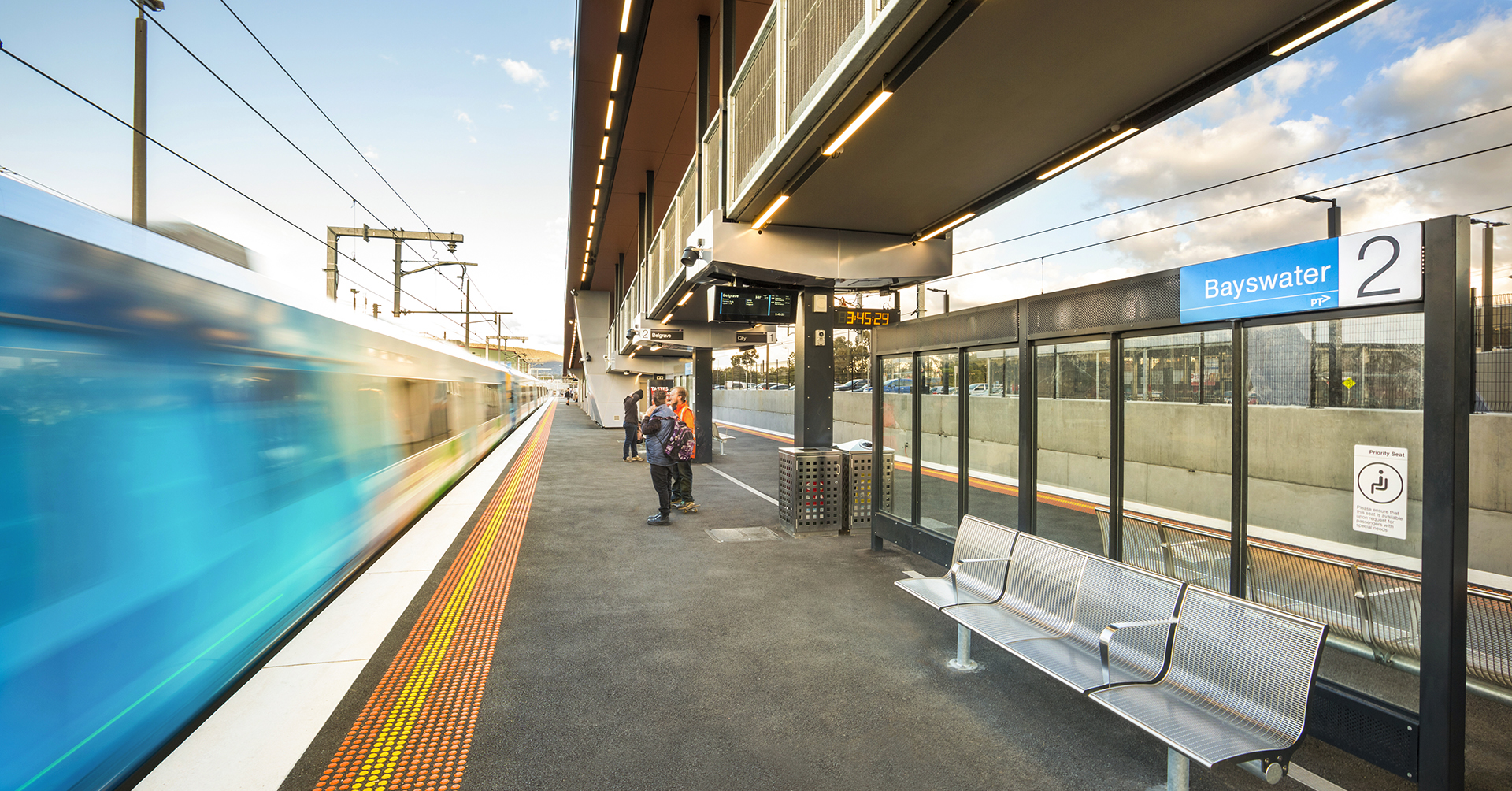From One Crossing To Another
From One Crossing To Another
Sam Donaldson | Laing O’Rourke
Bayswater Level Crossing Removal Project
In November 2015, the Bayswater Level Crossing Removal Project (‘Bayswater’) was awarded to Laing O’Rourke in alliance with Fulton Hogan, AECOM, the Level Crossing Removal Authority, VicRoads, Public Transport Victoria, and Metro Trains.
Situated 25 kilometres east of Melbourne, the project involved the removal of two level crossings, major modifications to the rail and road network, and construction of a new state-of-the-art train station.
Completed in 2017, the team worked extremely hard to deliver a significant amount of work within a short design and construction timeframe, whilst also setting new benchmarks in sustainable design and delivery.
Sustainable Innovation
The project’s innovative approach to sustainability garnered industry wide recognition, including an Infrastructure Sustainability Council of Australia (ISCA) award for achieving 93.5 out of a possible 105 points for their design rating. This surpassed any previous scores for an infrastructure project and set a new benchmark for level crossing removal projects.
Innovations and initiatives taken on the project included:
- Introducing LED lighting on arterial roads under an Ausnet Scheme to provide significant energy savings
- Using digital engineering as a powerful way to communicate with stakeholders and the local community
- Adopting an alternative bridge abutment design to reduce road network disruptions and optimise sustainable products
- Using a dewatering centrifuge unit to separate sediment in slurry into a dry fill product providing significant water savings, reducing waste and improving logistical efficiencies on construction program
- A complete re-design of the reference design to generate significant material reductions
- Selecting sustainable materials for asphalt, concrete, quarried products and steel
- Installing rainwater harvesting tanks and groundwater collection tanks to reduce water consumption and increase water efficiency
The results led to over 40% reduction in greenhouse gas emissions produced by the project, close to 70% less drinking water consumed compared to average infrastructure assets. In addition, using less materials and concrete with less cement reduced the embodied carbon emissions from construction materials by approximately 30%.
Sharing the Bayswater Blueprint
Following the success of Bayswater, the team has actively shared positive outcomes with other projects to inspire them to get on the path of sustainability – most recently taking their learnings to the Hurstbridge Rail Line Upgrade Works, which is being delivered as part of the North Eastern Program Alliance (NEPA).
The Program Alliance is geared to manage a program of works, rather than discrete packages, to provide efficiencies in delivery and reduce disruptions. To help ensure a Leading IS rating for the Hurstbridge Rail Line Upgrade, a dedicated team for sustainability has been put together covering a broad range of experience from sustainability, stakeholder interface, environment and project management.
The scope of works for the Project includes the removal of the level crossings at Grange Road, Alphington and Lower Plenty Road, Rosanna, reconstruction of Rosanna train station, and duplication of the single rail track between Heidelberg Station and St James Road in Rosanna. It also includes rail system upgrades to signalling, overhead line electrification and five substations.
Harnessing the power of Digital Engineering
Digital Engineering (DE) was a key driver for successful engagement on the Bayswater project, and the team has continued to utilise this for meetings with community members and during public information sessions to help people contextualize the project’s design.
DE has also been valuable for creating efficiencies and improving decision making processes, as was collaborating with other projects, sectors in the industry, and the broader industry, to understand different approaches and solve industry challenges. For example, DE is being used to better manage contaminated soil on the project.
Sustainability: Next Steps
It is clear that beyond these projects, there needs to be a collective decision by clients and construction businesses to prioritise sustainability. Specifying sustainability rating targets and recruiting a resource to manage sustainability creates direction and outcomes for sustainability, but is only the start. With the emergence of sustainability requirements on projects, construction businesses would derive significant benefit from standardising their own sustainability approach. The IS rating tools provides an excellent basis for that. In doing so, there are opportunities to improve data collection and monitoring, quality assurance and reporting on infrastructure projects – allowing teams to manage sustainability performance proactivity during delivery and therefore rely less on external verifications.
Considering most of the construction work is delivered by subcontractors, the supply chain becomes critical in achieving sustainability outcomes on major infrastructure projects. Because of this, projects (such as NEPA) continue to focus on integrating sustainability into the procurement process. A first step was to encourage procurement and commercial team members to attend IS training events. The changes improved the project’s and supply chain’s understanding of sustainability challenges and opportunities within the industry.
NEPA also works with ISCA to provide feedback on the application of credits from contractor and delivery perspectives. This has been done with the new sustainable procurement credit.
All functions on an infrastructure project contributes to its success. Achieving positive and sustainable outcomes are no different. It is up to everyone to play their part in creating a team culture of sustainability – one that strives for continuous improvement, innovation, and designing and building things better. Thinking about infrastructure delivery in this way and embedding sustainability into business systems to support this will help create a shift in the industry and ensure the infrastructure we build sustains communities into the future.

